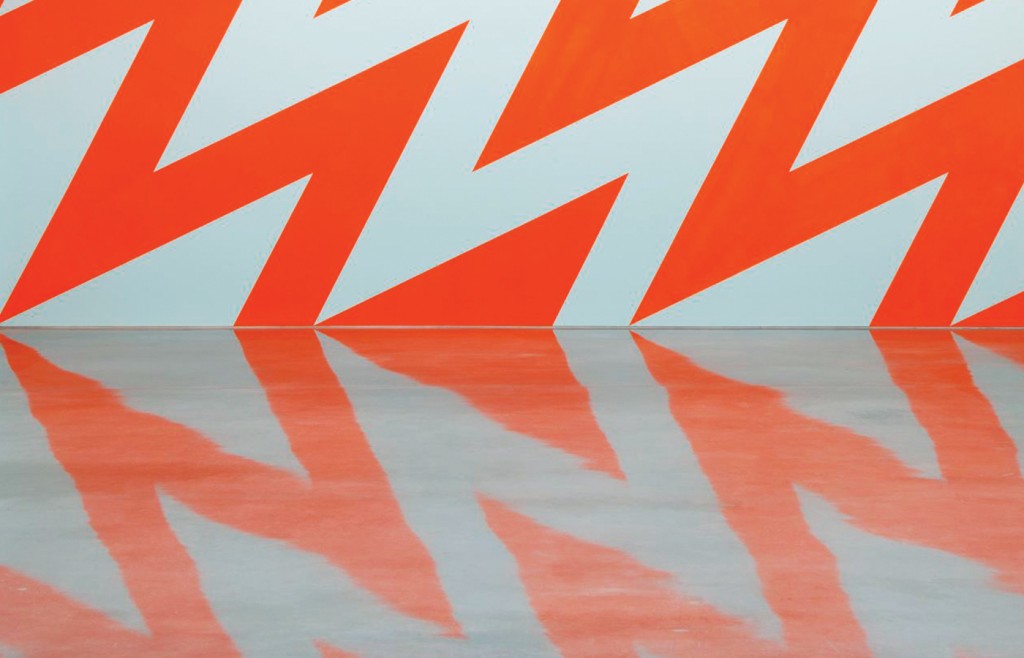ARTBANK
Architect: Aileen Sage Architects
Date opened: August 2014
Isabelle Toland and Amelia Holliday –Aileen Sage
Laura Wise (LW): How did you approach the brief from the client?
Isabelle Toland and Amelia Holliday (IT & AH): Artbank had very specific requirements in terms of storage space for the art collection – in particular the need to relocate the massive existing steel framed art storage racks from their previous premises. The racks are essentially the core of what Artbank do – so it made sense for them to be located in the centre of the space and for everything else to look down on to or into them – consequently framing views into and out of this space became a key driver for the project.
LW: How were the needs of both external clients (visitors) and internal clients (curators) integrated into the design of the space?
IT & AH: For the internal clients (Artbank staff), we wanted the everyday working environment to be entertaining, interesting and enjoyable. This was sought through the use of unexpected colour, customised workstations and shelving units that could be personalised, as well as opportunities for display of artworks from the collection scattered throughout the office. For the external clients (visitors), a sense of drama was given to the whole experience. The entry into the building is into a 14m high tower space painted entirely black, with a polished black concrete floor reflecting the specially commissioned kinetic light artwork by Ross Manning suspended above. From the entry tower, the visitor proceeds to the reception where the large arched windows to the street are retained and reflected in the mirrored surface of the reception counter. Even the client bathroom was designed as a dramatic experience, clad entirely in mirror it was inspired by Yayoi Kusama’s infinity rooms. The gallery has the flexibility of mobile and temporary walls to change the focus and layout as desired. Moving through the gallery, one then enters into the densest part of the collection – into the middle of the massive steel sliding art racks from which you can also look up to the objects stored on the mezzanine level above.
LW: What drew you to working with Artbank on this project?
IT & AH: Artbank were a very enthusiastic, supportive and determined client, committed to the promotion of a new architectural firm. They were active, constructively vocal and very hands on in the whole process of achieving the end result whilst still carrying on their regular jobs within the organisation – certainly no mean feat.
LW: In what ways is designing such a gallery space different or similar to other projects you have undertaken?
IT & AH: Playfulness and connectivity are key drivers for the design and common themes in the work of the office. We are particularly interested in the interface between private and public spaces in our public, commercial and domestic commissions and these relationships were key in developing our approach to the project.
Tony Stephens – Director, Artbank
LW: What was the design brief to the architect?
Tony Stephens (TS): The design brief was three-fold: to have a public facing gallery; contemporary offices for staff; and a storage area for our collection. We wanted an integration of all these things so they work with each other – both physically and aesthetically – and lead from one to the other.
LW: How does the design impact visitor experience and engagement with exhibitions?
TS: We wanted the materiality of the space to be something that would patina and age well over a 20-year period. It has worked well in terms of visitor experience – there is an impressive entry into the building with a commissioned artwork that is kinetic and activates the space, leading through to a mirrored reception area – which reflects and also disappears within the space – and then into the gallery. We have had two exhibition launches thus far that have worked really well and it feels like the space works the way it should.
LW: Have there been any unexpected outcomes for the main internal clients of the space, the curators, as a result of the design?
TS: In the gallery, I think the relationship between, and the inter-connectedness of all the spaces – whether it is the office, the collection store or the gallery itself – with the constant flow through of staff movements and sight lines, means that an exhibition can develop in a way that there is opportunity to go in different tangents. I think that is one of the advantages of this space – it actually reflects the organisation, how it thinks and how the people within it work.
LW: What drew you to working with Aileen Sage Architects for this project?
TS: Working with Isabelle and Amelia really fit with the ethos of Artbank in terms of supporting creatives, especially at early stages of their career. Amelia and Isabelle have a natural inclination and sympathy for visual art alongside they could think about the way the architectural form competed and complimented art alongside what our business was. So the architecture is understated when it needs to be, but bold and confident when it requires.

























